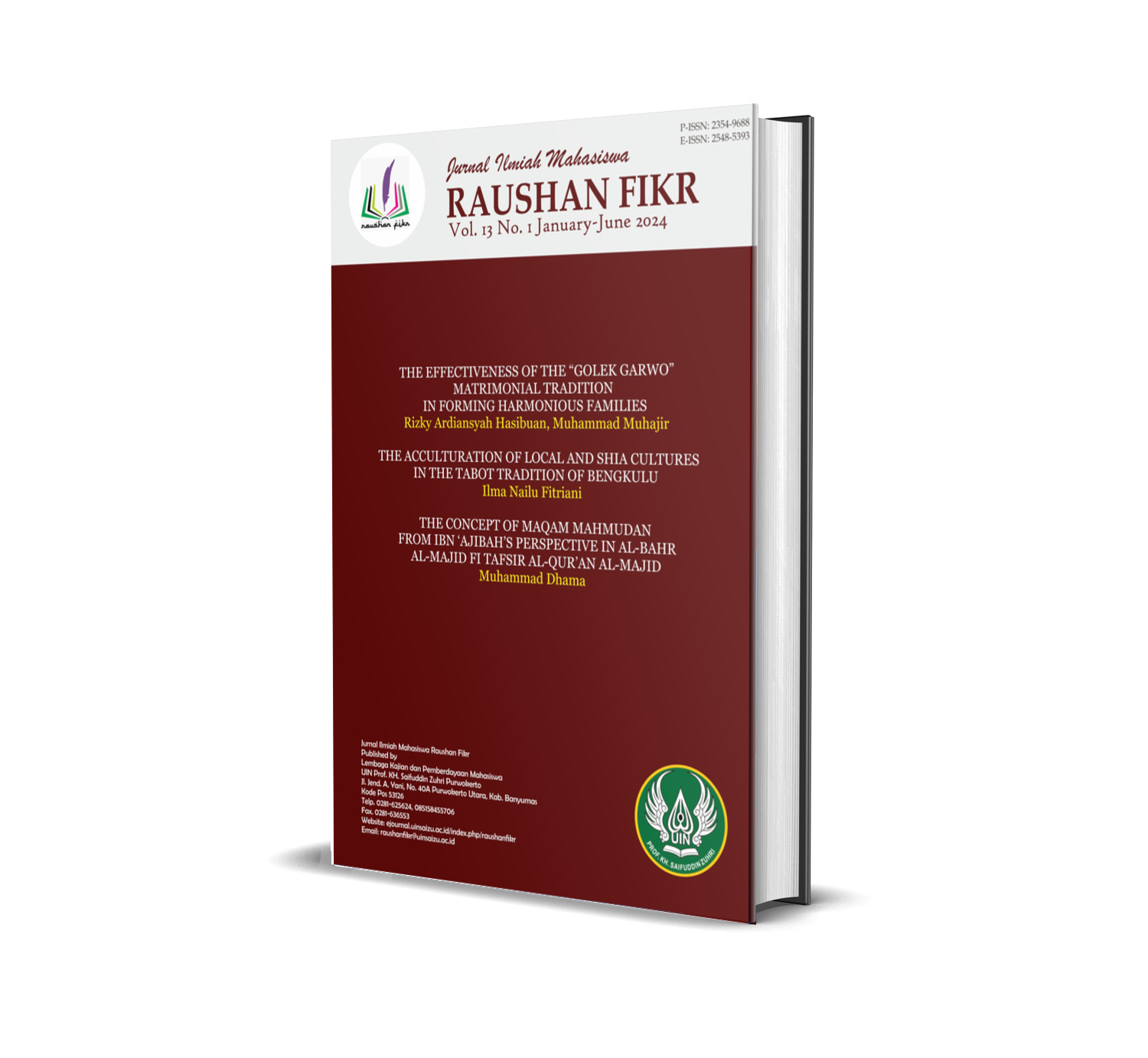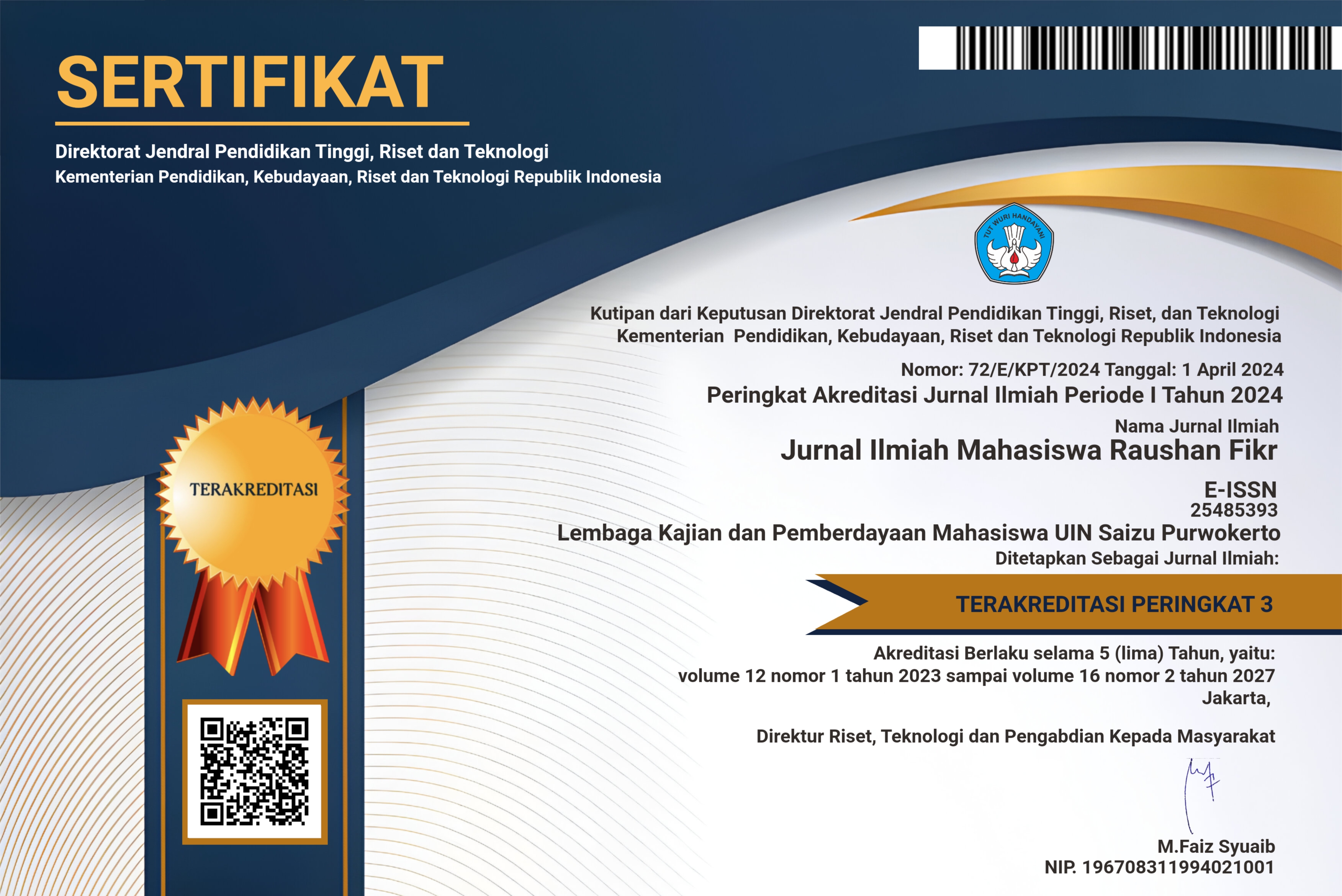Analysis of Price Undercutting in Islamic Law: Implications for Modern Sales Systems
DOI:
https://doi.org/10.24090/jimrf.v13i1.11420Keywords:
Marketing Strategy, Price Reduction, Islamic Law, Economic Transactions, Mutual ConsentAbstract
This study aims to investigate the perspective of Islamic law on the implementation of price reduction systems in the marketing of adult and children’s clothing, as well as men’s and women’s apparel. The research explores the conditions under which discounted goods are permissible according to Islamic principles. A qualitative method was employed, analyzing relevant Islamic legal texts and contemporary market practices. The findings indicate that Islamic law permits price reduction systems, provided they meet specific conditions. The seller may set a base price and offer discounts, which must be agreed upon by both parties involved in the transaction. The process must ensure mutual consent without coercion or fraud (gharar). The transaction proceeds with a sale and purchase contract if an agreement is reached. Otherwise, the transaction does not occur. This study contributes to understanding permissible marketing strategies within Islamic economics, highlighting the importance of fairness and mutual agreement in trade practices.Downloads
References
Al Qardawi, Y. (n.d.). FIQH AL ZAKAH (VOLUME I) A COMPARATIVE STUDY OF ZAKAH, REGULATIONS AND PHILOSOPHY IN THE LIGHT OF QUR’AN AND SUNNAH. King Abdulaziz University.
Al-Faifi, S. S. A. Y. (n.d.). Ringkasan Fikih Sunnah Sayyid Sabiq. Pustaka Al-Kautsar.
Antunes, I., Martinez, L., & Martinez, L. (2022). The effectiveness of sales promotion techniques on the millennial consumers’ buying behavior. ReMark - Revista Brasileira de Marketing, 21, 784–836. https://doi.org/10.5585/remark.v21i3.19997
Arcelus, F., Kumar, S., & Srinivasan, G. (2006). Pricing, rebate, advertising and ordering policies of a retailer facing price-dependent stochastic demand in newsvendor framework under different risk preferences. International Transactions in Operational Research, 13, 209–227. https://doi.org/10.1111/j.1475-3995.2006.00545.x
Azkanar, O. (2016). THE EFFECTIVENESS OF MURABAHAH IN ISLAMIC LAW IN TERMS OF HOUSE FINANCING: COMPARING THE UK AND MALAYSIA. Law & Justice Review, 2, 121.
Babayev, F., & Balajayeva, T. (2023). WAYS OF INCREASING THE COMPETITIVENESS OF FOOD INDUSTRY ENTERPRISES. International Journal of Innovative Technologies in Economy. https://doi.org/10.31435/rsglobal_ijite/30122023/8069
Bahri, S., Syarkawi, S., Mursal, M., Fizazuawil, F., & Maimun, M. (2019). Trust Giving Transactions on Mu’amalah Al-Wadi’ah. Budapest International Research and Critics Institute (BIRCI-Journal) : Humanities and Social Sciences, 2. https://doi.org/10.33258/birci.v2i1.149
Barrowes, E., & Barrowes, B. (2021, October 1). Benefit Optimization of Individual and Collective Extrapersonal Assistance.
Blattberg, R., & Briesch, R. (2012). Sales Promotions. In The Oxford Handbook of Pricing Management. https://doi.org/10.1093/oxfordhb/9780199543175.013.0024
Caliskan-Demirag, O., Baysar, O., Keskinocak, P., & Swann, J. (2009). The effects of customer rebates and retailer incentives on a manufacturer’s profits and sales. Naval Research Logistics (NRL), 57, 88–108. https://doi.org/10.1002/nav.20390
Celik, B. (2020). General Livelihood and Income Sources of Islamic Economics.
Choudhury, M. A. (1986). Contributions to Islamic Economic Theory: A Study in Social Economics. Palgrave Macmillan.
Cowton, C., & San-Jose, L. (2017). On the Ethics of Trade Credit: Understanding Good Payment Practice in the Supply Chain. Journal of Business Ethics, 140. https://doi.org/10.1007/s10551-016-3050-9
Crama, Y., Pascual, R., & Torres, A. (2004). Optimal procurement decisions in the presence of total quantity discounts and alternative product recipes. European Journal of Operational Research, 159, 364–378. https://doi.org/10.1016/j.ejor.2003.08.021
Creswell, J. (2012). Research Design: Pendekatan Kualitatif, Kuantitatif, dan Mixed. Pustaka Pelajar.
Fadli, M. R. (2021). Memahami desain metode penelitian kualitatif. Humanika, Kajian Ilmiah Mata Kuliah Umum, 21(1), Article 1. https://doi.org/10.21831/hum.v21i1.38075
Farida, I., & Setiawan, D. (2022). Business Strategies and Competitive Advantage: The Role of Performance and Innovation. Journal of Open Innovation: Technology, Market, and Complexity, 8, 163. https://doi.org/10.3390/joitmc8030163
Gong, J., Smith, M., & Telang, R. (2015). Substitution or Promotion? The Impact of Price Discounts on Cross-Channel Sales of Digital Movies. Journal of Retailing, 91. https://doi.org/10.1016/j.jretai.2015.02.002
Gordon-Hecker, T., Pittarello, A., Shalvi, S., & Roskes, M. (2019). Buy-One-Get-One-Free Deals Attract More Attention than Percentage Deals. Journal of Business Research, 111. https://doi.org/10.1016/j.jbusres.2019.02.070
Hanif, M., & Iqbal, A. (2010). Islamic Financing and Business Framework: A Survey.
Harahap, R., & Situmorang, A. (2023). Influence of Price Promotion and Discounts on Sales: Study at A Medical Device Company in Medan City. Jurnal Ekonomi, Bisnis & Entrepreneurship, 17, 26–34. https://doi.org/10.55208/jebe.v17i1.309
Hofmann, M. W. (2002). The Future of Economics: An Islamic Perspective. By Umer Chapra. Intellectual Discourse, 10(1), Article 1. https://doi.org/10.31436/id.v10i1.321
Idri, M., & Baru, R. (2017). The Principles of Islamic Economics and their Implementation in Indonesia. International Journal of Academic Research in Business and Social Sciences, 7. https://doi.org/10.6007/IJARBSS/v7-i4/2809
Islahi, A. (2008). Mahmoud A. El-Gamal Islamic Finance: Law, Economics and Practice Cambridge University Press, Cambridge, New York. 2006, 221 pp. Journal of King Abdulaziz University : Islamic Economics, 21. https://doi.org/10.4197/islec.21-2.5
Jalil, D., & Rahman, M. (2010). Islamic Law of Contract is Getting Momentum. International Journal of Business and Social Science, 1, 175–192.
Kamali, M. H. (2002). Islamic Commercial Law: An Analysis of Futures and Options. Ilmiah Publishers.
Lee, Y., & O’Connor, G. (2003). The Impact of Communication Strategy on Launching New Products. Journal of Product Innovation Management, 20, 4–21. https://doi.org/10.1111/1540-5885.t01-1-201002
Li, Y., Khouja, M., Pan, J., & Zhou, J. (2022). Buy-One-Get-One Promotions in a Two-Echelon Supply Chain. Management Science, 69. https://doi.org/10.1287/mnsc.2022.4638
Ma, Y. (2022). The Research on the Marketing Strategies of Luxury Brands and its Extension—Taking Tiffany & Co. As an Example. BCP Business & Management, 33, 1–6. https://doi.org/10.54691/bcpbm.v33i.2710
Moleong, L. J. (2006). Metode Penelitian Kualitatif. PT. Remaja Rosdakarya.
Nabi, N. (2016). THE ECONOMIC THOUGT OF KHURSHID AHMAD. Turkish Journal of Islamic Economics, 3, 1–1. https://doi.org/10.15238/tujise.2016.3.2.1-11
Nurlaelawati, E. (2010). Zakat and the Concept of Ownership in Islam: Yusuf Qaradawi’s Perspective on Islamic Economics. Al-Jami’ah: Journal of Islamic Studies, 48. https://doi.org/10.14421/ajis.2010.482.365-385
Palazon, M., & Ballester, E. (2009). Effectiveness of price discounts and premium promotions. Psychology and Marketing, 26, 1108–1129. https://doi.org/10.1002/mar.20315
Putri, A. (2024). NAVIGATING COMMERCE ETHICALLY: MERCHANT DISCOUNT RATE SETTING POLICY IN ISLAMIC BANKING.
Rubin, P., & Benton, W. (2003). A Generalized Framework for Quantity Discount Pricing Schedules. Decision Sciences, 34, 173–188. https://doi.org/10.1111/1540-5915.02437
Schmitt, C. (2013). Entrepreneur Profile and Sustainable Innovation Strategy. In Strategies for Sustainable Technologies and Innovations (pp. 186–203). https://doi.org/10.4337/9781781006832.00020
Sharif, M. R. (1963). Islamic Social Framework. Sh. Muhammad Ashraf.
Siddique, M. A. (2015). The Concepts of Discounting and Time value of money in Islamic Capital budgeting Framework: A Theoretical study. Journal of Islamic Banking and Finance, Pakistan, 32, 23–29.
Sintani, L., Ridwan, R., Kadeni, K., Savitri, S., & Ahsan, M. (2023). Understanding marketing strategy and value creation in the era of business competition. International Journal of Business, Economics & Management, 6, 69–77. https://doi.org/10.21744/ijbem.v6n1.2087
Tsai, W.-C., & Wang, C.-H. (2010). Decision making of sourcing and order allocation with price discounts. Journal of Manufacturing Systems - J MANUF SYST, 29, 47–54.
Downloads
Published
How to Cite
Issue
Section
License
Copyright (c) 2024 Muhammad Saleh, Abdullah Sani, Pudhak Prasetiyorini, Bernadetta Tjandra Wulandari, Karimuddin Abdullah Lawang

This work is licensed under a Creative Commons Attribution-NonCommercial-ShareAlike 4.0 International License.
Authors who publish with this journal agree to the following terms:
- Authors retain copyright and grant the journal right of first publication with the work simultaneously licensed under a Creative Commons Attribution-NonCommercial-ShareAlike 4.0 International License that allows others to share the work with an acknowledgement of the work's authorship and initial publication in this journal.
- Authors are able to enter into separate, additional contractual arrangements for the non-exclusive distribution of the journal's published version of the work (e.g., post it to an institutional repository or publish it in a book), with an acknowledgement of its initial publication in this journal.
- Authors are permitted and encouraged to post their work online (e.g., in institutional repositories or on their website) prior to and during the submission process, as it can lead to productive exchanges, as well as earlier and greater citation of published work (See The Effect of Open Access).
















